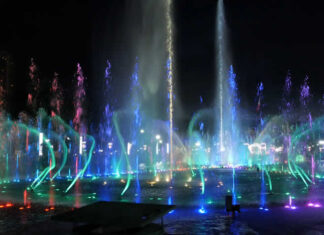History 20/02/20 What lands joined Russia at the end of the first war
At the end of the XV century formed a unified Russian state with its capital in Moscow. In 1478 Grand Duke of Moscow Ivan III annexed to his possessions a vast Novgorod power in 1485 Tver Grand Duchy, at 1489 m – Vyatka. In the whole of North-Eastern Russia remained formally independent, only the Grand Duchy of Ryazan and Pskov Veche Republic. But they “went throughout the will” Grand Duke of Moscow.
Moscow power thanks to the marriage of Ivan III with the Byzantine Princess Sophia learns in this time, not only the emblem of the Palaeologus – headed eagle, but also the Greek name “Rosia” (so far, with one “s”). Ivan III begins to implement a program of annexation of the lands of the former Kievan Rus, which is seen as his “paternal”. These claims for the first time in Moscow was announced by Prince Simeon, son of Ivan Kalita, who has a nickname of the Proud (1340-1353). He was the first Russian Prince was credited to my title “and all Rus”.
most of the lands of Kievan Rus was then under the rule of the Grand Duchy of Lithuania (GDL), which is not without reason referred to as the Lithuanian-Russian. Indeed, the names White Russia and Ukraine in that time was used more rarely. It was the Lithuanian Rus Western Europe predominantly called Russia before the end of the seventeenth century, whereas for Moscow Russia all the time used the name of Moscovia. The majority of the population consisted then the Orthodox, the official language was old Russian. But thanks to the Union of Lithuania and Poland in 1385 there were processes okatolichenya and influence of the ruling class.
By the beginning of the reign of Ivan III in Moscow on included lands not only in modern Ukraine and Belarus, but also the territory of the present Smolensk, Bryansk, Orel, a significant portion of Kaluga and Tula regionthis hotel is within the RF. Local princes (Vyazemsky Vorotynskiy, Odoevskiy, Belevskii, Novosil, etc.) have ruled their lands independently, considering only the vassals of the Grand Duke of Lithuania. According to the then custom, the princes had a right to change his suzerain. The edge position called principalities (most of which was called Verkhovskii on their location in the upper reaches of the rivers Oka and Desna) facilitated the transitions of their princes, the service of the Moscow rulers not only personally, but together with their lands.
Ivan III actively incited Verkhovsky of the princes of the Lithuanian treason to his sovereign, and in 1470-80-ies there were several such crossings. They caused constant dissatisfaction in Vilna, but it did not go beyond the exchange of embassies and angry notes. In the years 1487-1489’ve already followed a series of such bounds. Undoubtedly, she contributed to a significant rise of Moscow, to subdue all Russian lands beyond the Great Duchy of Lithuania. In 1489 Moscow’s troops begin to invade the border Verhovsky’s princedoms, while the faithful of Lithuania, trying to sway the not yet fallen away from her princes.
Casimir IV connecting in the hands of Polish and Lithuanian thrones, already old and sick, could not respond quickly and appropriately. In 1492 he died, and Lithuania with Poland at the time again divided. Lithuanian gentry proclaimed as its Grand Duke Alexander, the fourth son of Casimir. This was for Ivan III the signal for the open invasion of the Grand Duchy of Lithuania.
In the years 1492-1493 during the clashes that took place with varying success, Moscow adds to his Odoevskoe, Belevskoe, Vorotynskoe, besides principalities, but the Lithuanian forces manage to win back the Novosil and Mtsensk. The ultimate success of Moscow contributed to the transitions of most of the local princes in the service of Ivan III and the attitude of the population.
it is Characteristic that both sides had not formally terminate the contract, so to speak, “on friendship and GranItza” between Moscow and on enclosed in 1449 Vasily the Dark and Casimir, and was not declared a war. Was, in modern terms, the “hybrid war”. But in Moscow and in Vilnius wanted to stake out new geopolitical realities, therefore the Embassy of Alexander in Moscow in January 1494 with an offer of peace met a favorable reception.
during the talks, Ivan III put forward the claim on Kiev, Chernigov, Volhynia and White Russia. For its part, Lithuania wanted Moscow’s refusal of rights to Novgorod, Pskov and Tver. However, the parties rather quickly reached agreement on the terms of fixing actual possession of the territories established in the course of an undeclared war, and the border princes Mezetsky and Mosal remained vassals of Moscow and Lithuania. February 7, 1494 the Treaty of peace was signed.
Lithuania wanted to protect themselves from future attacks from Russia, dynastic marriage, and the following year took place the wedding of Alexander with the daughter of Ivan III Elena. However, Ivan III considered this marriage as a means of further diplomatic pressure on Lithuania. Using the imaginary harassment in the faith, allegedly perpetrated by Alexander to his wife, the Moscow Tsar after a few years of resumed hostilities. However, it was a different war. It happened in 1500-1503 years and ended in a major territorial acquisitions of the young Russian.
Yaroslav Butakov
Source:
© Russian Seven
Featured articles Share: Comments Comments on the article “What lands joined Russia at the end of the first war” Please log in to leave a comment! br>
Share on Tumblr


















